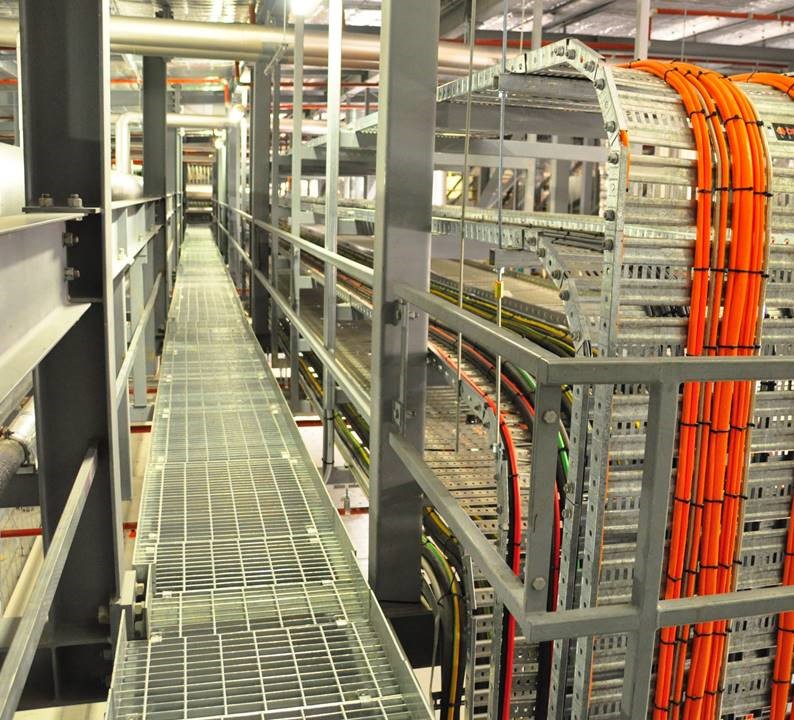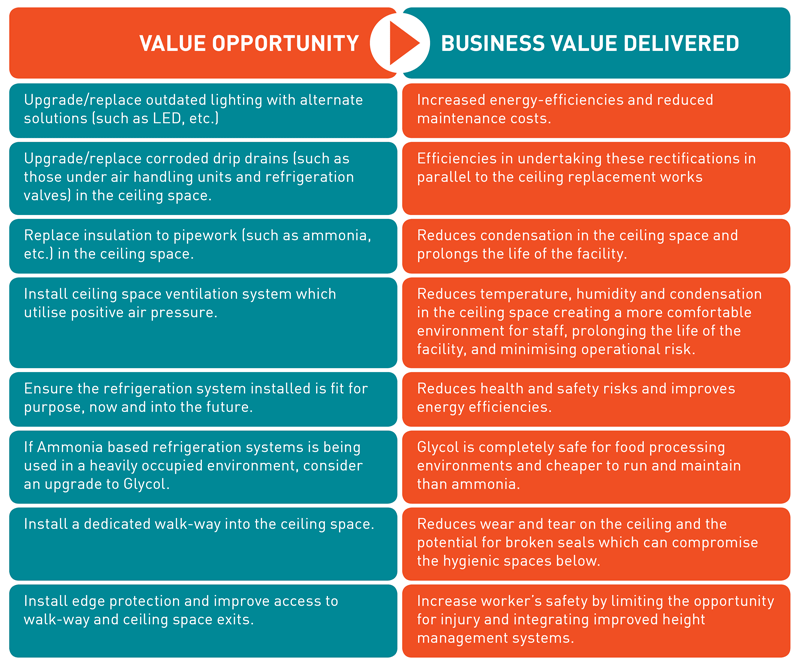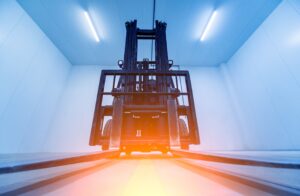Ceiling replacements in high hygiene, food processing environments are complex. The risks to your business can be significant over the short, medium and long term. The solution to this is to combine careful planning with experience when tackling any ceiling replacement. With the right plan and the right people on your team, there are many opportunities to create lasting value.
Food manufacturing facility ceilings are critical. These ceilings separate the hygiene and temperature controlled environments from the ceiling spaces above. Those ceiling spaces often house essential production inputs such as energy, water, gas, data and other services for the processes below. The health, safety and efficiency of the environments (both above and below) rely on a quality ceiling.
In the short term, the largest cost associated with a ceiling replacement project is the potential disruption to your business. This frequently outweighs the cost of the ceiling replacement project itself. In the medium to long term, the largest concern is ensuring that your facility is well equipped to manage future needs.
The right process can make a difference
Over the course of many ceiling replacement projects, Wiley’s team have developed strong management processes in live operating environments. This reduces the impact on your business by reducing project time and production downtime.
Careful management, planning and experience in a ceiling replacement project can:
- Reduce or eliminate potential knock-on costs
- Reduce the potential for unfulfilled production quotas
- Reduce the potential of exposing high-hygiene processing environments to contamination
- Increase the longevity and future flexibility of the facility
- Reduce risk in both production and on the project

What are the steps for a ceiling replacement project?
The keys to a successful ceiling replacement project include:
Collaboration
Undertake collaborative Safety, Quality and Environment workshops to develop a detailed risk assessment matrix. This ensures all the information required to manage risks are known and can be managed effectively. The project team must then determine the areas that are available, when access can commence, the timing for completion and the return of the facility to full production levels.
A focus on the future
Start with an intensive audit to determine the status of the ceiling and scope of the works. Particular attention should be paid to the services above and below the ceiling. Identifying suspension requirements, the size of panelling, lighting and ventilation needs is essential. A focus on the future is beneficial as any adjustments, relocations or upgrades to these services can be built into the project.
Resource and production planning
Resource planning is key for all projects. It is important to ensure the scope of work is achievable within any pre-planned shutdown periods. Multiple strategies for each phase of work should also be developed to combat potential challenges and risks. This should include fluid approaches to timing and deliverables, such as splitting the project into smaller phases of work. This will minimise disruption to the production environment and keep your business running.
Understanding the risks
In certain environments such as Blast Chillers and Freezers, insulated panel ceilings can be of significant concern. For example, condensation or wet areas can penetrate seals (through corrosion or impact), waterlog the interior of the panels and freeze. Waterlogged or frozen panels represent a significant safety risk as they become much heavier. The additional strain on the structure can lead to ceiling collapse.
The danger this can present is something every business needs to address. Establishing the condition and weight of panels is a critical factor in the ceiling replacement project as it impacts cost, logistics and duration of works. It also represents a risk to the safety of the production and project teams.
Fit for purpose
Insulated panel ceiling materials are available in a wide range of choices. It is often a decision between Expanded Polystyrene (EPS), (usually found in older facilities), or Polyisocyanurate (PIR) panels (designed for improved fire resistance). PIR products are generally preferred by insurers and often lead to lower insurance premiums. However, there are many things to consider and it’s important to review all options. The objective is to marry the most suitable panel product with the project. Wiley leverage our experience and research capabilities to design the best solution for our client now and into the future.
Opportunities to add value
It is important to find and capture value in any ceiling replacement project. Here is a list of common opportunities to add value.

Wiley can help navigate your ceiling replacement
Although a ceiling replacement can represent a considerable challenge for facility owners, it is essential to the overall life of your facility to have the ceilings audited on a regular basis. If issues are discovered, it is imperative that the appropriate upgrade or replacement works are completed as required.
Wiley can address the core issues, identify a number of value gains and increase efficiencies for your ceiling replacement project to best capture value for your business.
To further this conversation, connect with some of our in-house specialists today.


